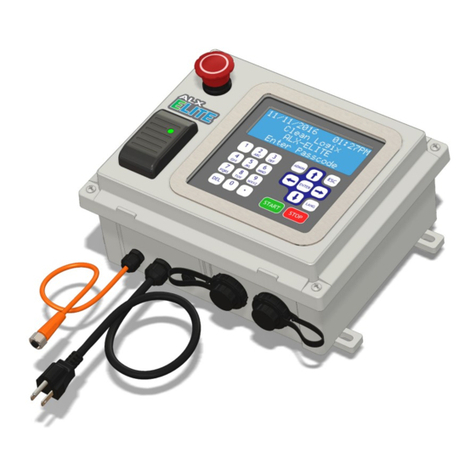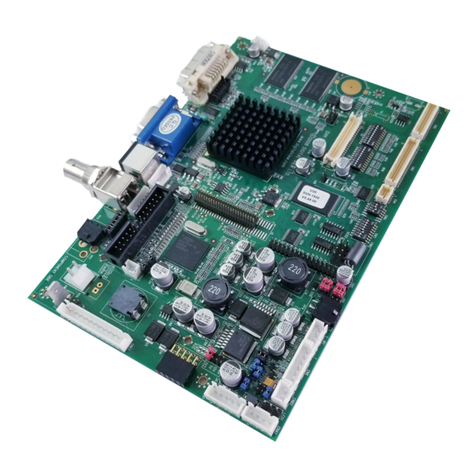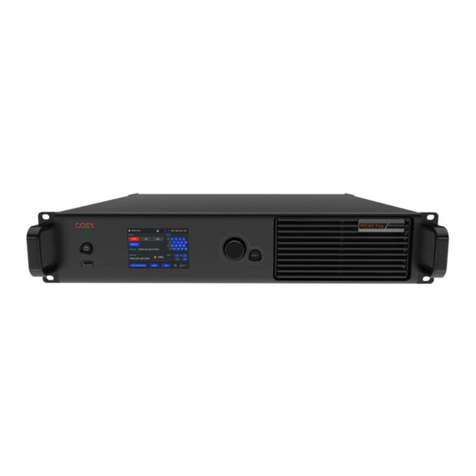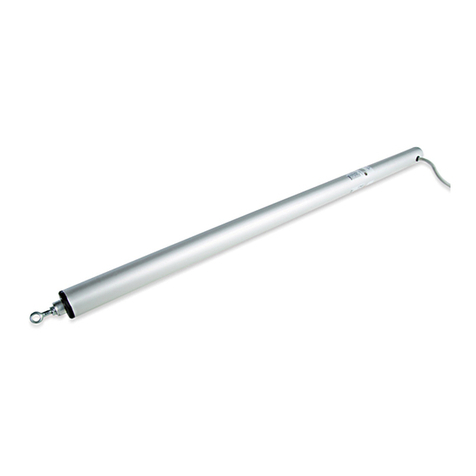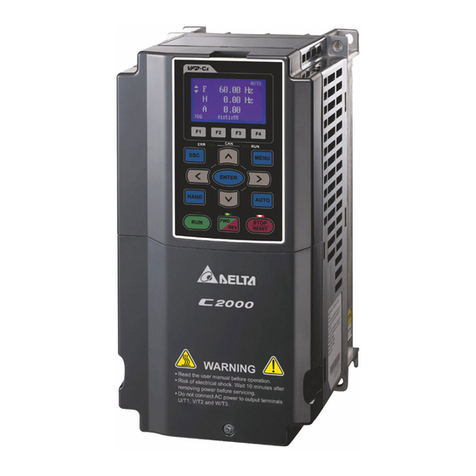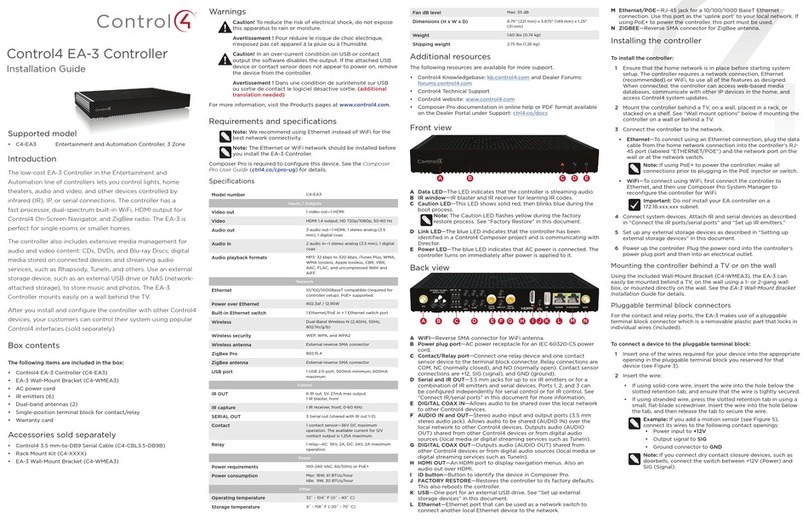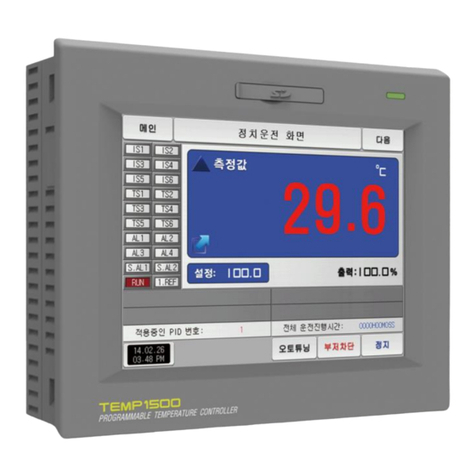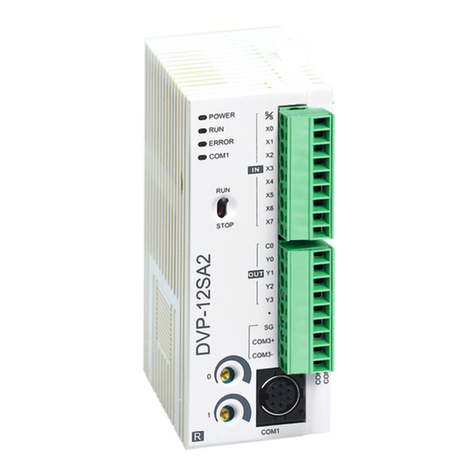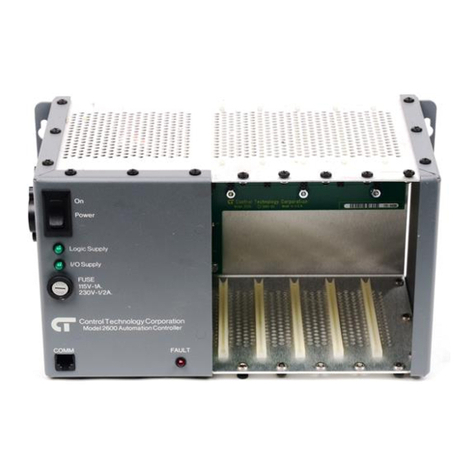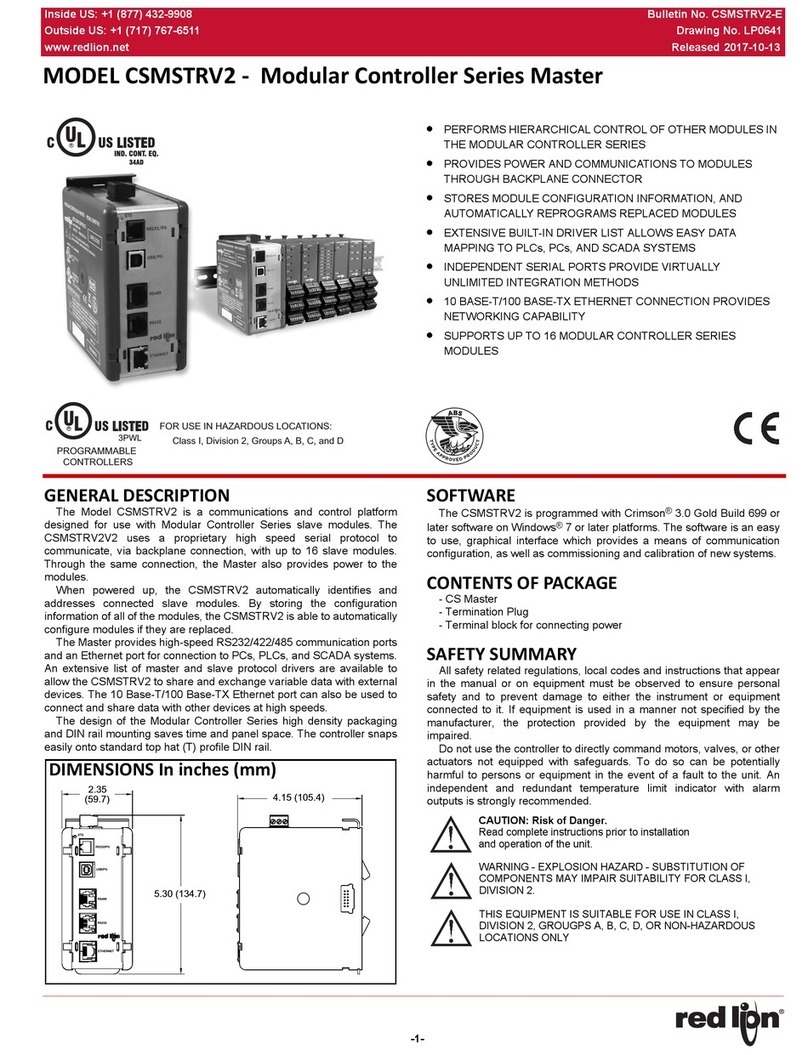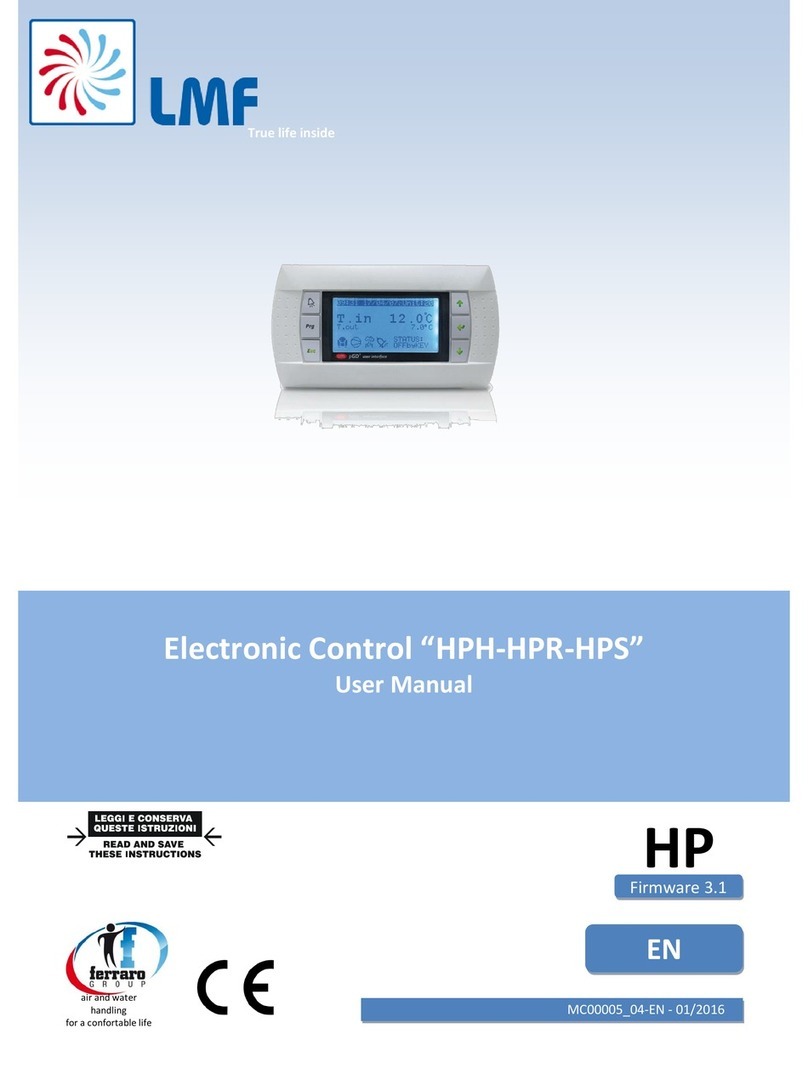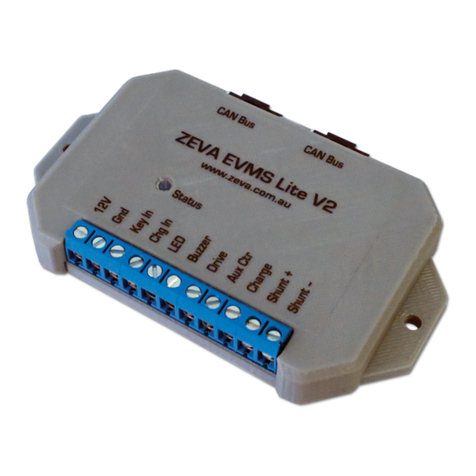Prologix GPIB-USB Controller User manual

PROLOGIX
GPIB-USB CONTROLLER
USER MANUAL
VERSION 6.102
April 18, 2011
PROLOGIX.BIZ

Prologix GPIB-USB ontroller User Manual
4/19/2011 2
Table of Contents
1. Introduction..........................................................................................................................4
2. Installation.............................................................................................................................4
3. Firmware Upgrade ...............................................................................................................4
4. Host Software.......................................................................................................................4
5. onfiguration........................................................................................................................5
6. Operating Modes..................................................................................................................5
6.1. ontroller Mode..........................................................................................................5
6.2. Device Mode................................................................................................................6
7. Data Transmission ...............................................................................................................6
7.1. Binary Data Transmission..........................................................................................7
8. ommands ............................................................................................................................8
8.1. addr................................................................................................................................8
8.2. auto................................................................................................................................8
8.3. clr...................................................................................................................................9
8.4. eoi ..................................................................................................................................9
8.5. eos................................................................................................................................10
8.6. eot_enable ..................................................................................................................10
8.7. eot_char ......................................................................................................................11
8.8. ifc.................................................................................................................................11
8.9. loc ................................................................................................................................11
8.10. lon................................................................................................................................11
8.11. mode ...........................................................................................................................12
8.12. read..............................................................................................................................12
8.13. read_tmo_ms .............................................................................................................12
8.14. rst.................................................................................................................................13
8.15. savecfg.........................................................................................................................13
8.16. spoll .............................................................................................................................13
8.17. srq ................................................................................................................................14
8.18. status ...........................................................................................................................14
8.19. trg.................................................................................................................................15
8.20. ver................................................................................................................................15
8.21. help..............................................................................................................................15
9. Specifications ......................................................................................................................15

Prologix GPIB-USB ontroller User Manual
4/19/2011 3
Change Log
April 18, 2011 Added ++lon command description.
Sept 14, 2009 Added ++savecfg command descripion. orrected maximum value
of read_tmo_ms to 3000 ms.
April 21, 2009 Added ++status command description. Updated ++addr, ++spoll
and ++trg command descriptions to include secondary address.
Added section on binary data transmission.
Mar 1, 2008 Updated ++trg command description.
Dec 22, 2007 Updated USB command terminator description and read_tmo_ms
command description.
Jul 9, 2007 Fixed typo in ++mode command description. Thanks Mike Schulz!
Jul 7, 2007 Added change log.
Renamed PERIPHERAL mode as DEVI E mode in line with
other GPIB literature.
Jul 5, 2007 Initial version.

Prologix GPIB-USB ontroller User Manual
4/19/2011 4
1. Int oduction
Prologix GPIB-USB controller converts any computer with a USB port into a GPIB
ontroller or Device.
In ontroller mode, Prologix GPIB-USB controller can remotely control GPIB enabled
instruments such as Oscilloscopes, Logic Analyzers, and Spectrum Analyzers.
In Device mode, Prologix GPIB-USB controller converts the computer into a GPIB
peripheral for downloading data and screen plots from the instrument front panel.
In both modes, Prologix GPIB-USB controller interprets high level commands received
from the host computer and performs the appropriate low-level GPIB protocol
handshaking.
2. Installation
Prologix GPIB-USB controller can be installed using these easy steps:
1. Download drivers for FT245R chip from FTDI website (www.ftdichip.com)
2. onnect Prologix GPIB-USB controller to a computer using USB A-B cable
3. Install drivers according to instructions in
www.ftdichip.com/Documents/InstallGuides.htm
4. Plug controller directly, or using a GPIB cable, to the GPIB connector on the
instrument
Two kinds of drivers are available: Virtual OM Port (V P) driver and Direct (D2XX)
driver. The V P driver emulates a standard serial port on the host computer such that
the Prologix GPIB-USB computer can be communicated with as a standard serial (RS-
232) device. D2XX driver allows direct access to the controller via a DLL interface.
3. Fi mwa e Upg ade
Prologix GPIB-USB controller firmware is field upgradeable. Latest firmware and
upgrade installations are available at prologix.biz
4. Host Softwa e
A wide variety of host software may be used to communicate with Prologix GPIB-USB
controller:
Te minal p og ams – any terminal emulation program such as HyperTerminal, Tera
Term Pro, or Minicom can be used to communicate with the controller and instruments
connected to it.

Prologix GPIB-USB ontroller User Manual
4/19/2011 5
Custom applications – any programming language or environment that provides access
to serial ports (if using V P driver) or allows interfacing to DLL (if using D2XX driver)
may be used to develop custom applications. Graphical programming environments like
National Instruments LabView and Agilent VEE may be used as well.
EZGPIB – an easy to use, programming environment developed by Ulrich Bangert for
developing data acquisition applications. Web link to this tool can be found at
prologix.biz.
Plotte emulato s – plotter emulation applications such as 7470.exe, Print apture and
Plottergeist can be used to render screen plots downloaded using Prologix GPIB-USB
controller. Details on how to configure these tools are available at prologix.biz.
5. Configu ation
Prologix GPIB-USB controller can be configured using any of the following methods:
P ologix.exe – Prologix.exe is an open source tool developed by John Miles for
configuring the controller. Web link to the tool can be found at prologix.biz.
Te minal p og am – any terminal emulation program such as HyperTerminal, Tera
Term Pro, or Minicom can be used to configure the controller by manually entering
appropriate commands (See ommands). Using the terminal program open the virtual
OM port created by the USB driver. Serial port parameters such as baud rate, data bits,
stop bits and flow control do not matter and may be set to any value. You may want to
enable the “Local Echo” feature in the terminal program to view the commands being
entered. Please consult the FAQ at prologix.biz, or the program’s user manual, for
detailed configuration steps for various terminal programs.
Prologix GPIB-USB ontroller stores the latest configuration settings in non-volatile
memory. These settings are not address specific. If you have multiple instruments on the
GPIB bus that require different configuration settings, you must change the settings
before communicating with each instrument.
6. Ope ating Modes
Prologix GPIB-USB controller can operate in two modes – ONTROLLER and
DEVI E. You can switch between the two modes using ++mode command (see
ommands).
6.1. Cont olle Mode
In ontroller mode, the GPIB-USB ontroller acts as the ontroller-In- harge ( I )
on the GPIB bus. When the controller receives a command over the USB port
terminated by the USB terminator – R (AS II 13) or LF (AS II 10) – it addresses the

Prologix GPIB-USB ontroller User Manual
4/19/2011 6
GPIB instrument at the currently specified address (See ++addr command) to listen, and
passes along the received data.
When Read-After-Write feature is enabled (See ++auto command) Prologix GPIB-USB
ontroller will addresses the instrument to talk after sending a command, in order to
read its response. All data received from instruments over GPIB is sent to host over
USB. Read-After-Write feature simplifies communication with instruments. You send
commands and read responses without consideration for low level GPIB protocol
details.
When Read-After-Write feature is not enabled Prologix GPIB-USB controller does not
automatically address the instrument to talk. You must use the ++read command to read
data.
ontroller mode is used to remotely control instruments and to download screen plots
by sending plot commands from a host computer.
6.2. Device Mode
In Device mode, Prologix GPIB-USB ontroller acts as another peripheral on the GPIB
bus. In this mode, the controller can act as a GPIB TALKER or GPIB LISTENER
only. Since Prologix GPIB-USB ontroller is not the ontroller-In- harge while in this
mode, it expects to receive commands from a GPIB controller. When Device mode is
enabled Prologix GPIB-USB controller configures itself as a GPIB Listener. All data
received by the controller over the GPIB port is passed along to the USB port without
buffering.
All data received from the host over USB is buffered until the GPIB controller addresses
Prologix GPIB-USB controller to talk, at which time the buffered data is passed along to
the GPIB port. The controller can buffer only one command. A subsequent command
received over USB will overwrite the previously buffered one, if the previous one has
not yet been transmitted over GPIB.
Device mode is used to download screen plots from the instrument front panel for
rendering using plotter emulation software.
7. Data T ansmission
In ontroller and Device modes, characters received over USB port are aggregated in an
internal buffer and interpreted when a USB termination character – R (AS II 13) or
LF (AS II 10) – is received. If R, LF, ES (AS II 27), or ‘+’ (AS II 43) characters are
part of USB data they must be escaped by preceding them with an ES character. All
un-escaped LF, R and ES and ‘+’ characters in USB data are discarded.

Prologix GPIB-USB ontroller User Manual
4/19/2011 7
As mentioned earlier, an un-escaped R or LF acts as the USB terminator. The
terminating R or LF is removed and GPIB termination characters (specified by ++eos
command) are appended before transmitting data to instruments.
Any USB input that starts with the unescaped “++” character sequence is interpreted as
a controller command and not transmitted over GPIB.
When configured to do so – using the ++auto command or the ++read command –
characters received from instruments are transmitted to host. Unlike while sending data
to instruments, no character substitution is performed. The firmware buffers only one
character. The FTDI USB driver provides additional buffering of about 4KB. If a device
is talking and the buffers (firmware’s and driver’s) are full, the device continues to be in
TALK mode but is stopped from further sending data using GPIB handshaking.
The ++eot_char command may be used to detect GPIB EOI signal assertion.
7.1. Bina y Data T ansmission
Prologix GPIB-USB controller can send and receive binary data to and from GPIB
enabled instruments.
No special action is necessary to receive binary data from instruments. Any binary data
received from the instrument is transmitted over USB to P unmodified, just as with
AS II data. Since binary data from instruments is not usually terminated by R or LF
characters (as is usually the case with AS II data), you may want to use the
++eot_enable command to detect EOI indicating end of data. See ++eot_enable
command help for more details.
Special care must be taken when sending binary data to instruments. If any of the
following characters occur in the binary data -- R (AS II 13), LF (AS II 10), ES
(AS II 27), ‘+’ (AS II 43) – they must be escaped by preceding them with an ES
character.
For example, to send the following (decimal) binary data:
00 01 02 13 03 10 04 27 05 43 06
it must be escaped as follows:
00 01 02 27 13 03 27 10 04 27 27 05 27 43 06
Further more, most instruments will get confused if GPIB termination characters, such
as R or LF, are appended to binary data. Use ++eos 3 command to disable such
behavior. See ++eos command help for more details.

Prologix GPIB-USB ontroller User Manual
4/19/2011 8
8. Commands
Prologix GPIB-USB controller provides several commands to configure its behavior.
They are explained in detail in the following sections. All commands start with the “++”
character sequence.
ommands must be terminated with R or LF.
8.1. add
The addr command is used to configure, or query the GPIB address. Meaning of the
GPIB address depends on the operating mode of the controller. In ONTROLLER
mode, it refers to the GPIB address of the instrument being controlled. In DEVI E
mode, it is the address of the GPIB peripheral that Prologix GPIB-USB controller is
emulating.
An optional secondary address may also be specified. Secondary address must be
separated from the primary address by a space character. Valid secondary address values
are 96 to 126 (decimal). Secondary address value of 96 corresponds to secondary GPIB
address of 0, 97 corresponds to 1, and so on. Specifying secondary address has no effect
in DEVI E mode.
If the command is issued with no parameters, the currently configured address (primary,
and secondary, if specified) is returned.
SYNTAX: ++addr [<PAD> [<SAD>]]
PAD (Primary Address) is a decimal value between 0 and 30.
SAD (Secondary Address) is a decimal value between 96 and 126. SAD is optional.
MODES AVAILABLE: ONTROLLER, DEVI E
EXAMPLES:
++addr 5 – Set primary address to 5
++addr – Query current address
++addr 9 96 – Set primary address to 9 and secondary address to 0
NOTE:
Default GPIB address of many HP-GL/2 plotters is 5.
8.2. auto
Prologix GPIB-USB controller can be configured to automatically address instruments
to talk after sending them a command in order to read their response. The feature called,

Prologix GPIB-USB ontroller User Manual
4/19/2011 9
Read-After-Write, saves the user from having to issue read commands repeatedly. This
command enabled or disabled the Read-After-Write feature.
In addition, auto command also addresses the instrument at the currently specified
address to TALK or LISTEN. ++auto 0 addresses the instrument to LISTEN and
++auto 1 addresses the instrument to TALK.
If the command is issued without any arguments it returns the current state of the read-
after-write feature.
SYNTAX: ++auto [0|1]
MODES AVAILABLE: ONTROLLER
NOTE:
Some instruments generate “Query Unterminated” or “-420” error if they are addressed
to talk after sending a command that does not generate a response (often called non-
query commands). In effect the instrument is saying, I have been asked to talk but I have
nothing to say. The error is often benign and may be ignored. Otherwise, use the
++read command to read the instrument response. For example:
++auto 0 — Turn off read-after-write and address instrument to listen
SET VOLT 1.0 — Non-query command
*idn? — Query command
++read eoi — Read until EOI asserted by instrument
"HP54201A" — Response from instrument
8.3. cl
This command sends the Selected Device lear (SD ) message to the currently specified
GPIB address. Please consult the programming manual for details on how a particular
instrument responds to this message.
SYNTAX: ++clr
MODES AVAILABLE: ONTROLLER
8.4. eoi
This command enables or disables the assertion of the EOI signal with the last character
of any command sent over GPIB port. Some instruments require EOI signal to be
asserted in order to properly detect the end of a command.
SYNTAX: ++eoi [0|1]

Prologix GPIB-USB ontroller User Manual
4/19/2011 10
MODES AVAILABLE: ONTROLLER, DEVI E
EXAMPLES:
++eoi 1 Enable EOI assertion with last character
++eoi 0 Disable EOI assertion
++eoi Query if EOI assertion is enabled or disabled
8.5. eos
This command specifies GPIB termination characters. When data from host is received
over USB, all non-escaped LF, R and ES characters are removed and GPIB
terminators, as specified by this command, are appended before sending the data to
instruments. This command does not affect data from instruments received over GPIB
port.
If the command is issued with no arguments then the current configuration is returned.
SYNTAX: ++eos [0|1|2|3] where: 0 – R+LF, 1 – R, 2 – LF, 3 – None
MODES AVAILABLE: ONTROLLER, DEVI E
EXAMPLES:
++eos 0 Append R+LF to instrument commands
++eos 1 Append R to instrument commands
++eos 2 Append LF to instrument commands
++eos 3 Do not append anything to instrument commands
++eos Query current EOS state
8.6. eot_enable
This command enables or disables the appending of a user specified character (see
eot_char) to USB output whenever EOI is detected while reading a character from the
GPIB port.
If the command is issued without any argument, the current state of eot_enable is
returned.
SYNTAX: eot_enable [0|1]
MODES AVAILABLE: ONTROLLER, DEVI E
EXAMPLES:
++eot_enable 1 Append user defined character when EOI detected
++eot_enable 0 Do not append character when EOI detected
++eot_enable Query current eot_enable state

Prologix GPIB-USB ontroller User Manual
4/19/2011 11
8.7. eot_cha
This command specifies the character to be appended to USB output when eot_enable is
set to 1 and EOI is detected.
If the command is issued without any argument, the currently specified character is
returned.
SYNTAX: eot_char [<char>] where <char> is a decimal value less than 256
MODES AVAILABLE: ONTROLLER, DEVI E
EXAMPLES:
++eot_char 42 Append * (AS II 42) when EOI is detected
++eot_char Query currently configured eot_char
8.8. ifc
This command asserts GPIB IF signal for 150 microseconds making Prologix GPIB-
USB controller the ontroller-In- harge on the GPIB bus.
SYNTAX: ++ifc
MODES AVAILABLE: ONTROLER
8.9. loc
This command enables front panel operation of the currently addressed instrument.
SYNTAX: ++loc
MODES AVAILABLE: ONTROLLER
8.10. lon
This command configures the GPIB-USB controller to listen to all traffic on the GPIB
bus, irrespective of the currently specified address. This configuration is also known as
“listen-only” mode. In this mode, the controller can only receive, but cannot send any
data.
SYNTAX: lon [0|1]
MODES AVAILABLE: DEVI E
EXAMPLES:
++lon 1 Enable “listen-only” mode

Prologix GPIB-USB ontroller User Manual
4/19/2011 12
++lon 0 Disable “listen-only” mode
++lon Query “listen-only” mode
8.11. mode
This command configures the Prologix GPIB-USB controller to be a ONTROLLER
or DEVI E.
If the command is issued without any arguments, the current mode is returned.
SYNTAX: ++mode [0|1] where 1 – ONTROLLER, 0 – DEVI E
MODES AVAILABLE: ONTROLLER, DEVI E
EXAMPLES:
++mode 1 Switch to ONTROLLER mode
++mode 0 Switch to DEVI E mode
++mode Query current mode
8.12. ead
This command can be used to read data from an instrument until:
•EOI is detected or timeout expires, or
•A specified character is read or timeout expires, or
•Timeout expires
Timeout is set using the read_tmo_ms command and applies to inter-character delay, i.e.,
the delay since the last character was read. Timeout is not be confused with the total
time for which data is read.
SYNTAX: ++read [eoi|<char>] where <char> is a decimal value less than 256
MODES AVAILABLE: ONTROLLER
EXAMPLES:
++read Read until timeout
++read eoi Read until EOI detected or timeout
++read 10 Read until LF (AS II 10) is received or timeout
8.13. ead_tmo_ms
This command specifies the timeout value, in milliseconds, to be used in the read
command and spoll command. Timeout may be set to any value between 1 and 3000
milliseconds.

Prologix GPIB-USB ontroller User Manual
4/19/2011 13
SYNTAX: ++read_tmo_ms <time> where <time> is decimal value between 1 and
3000
MODES AVAILABLE: ONTROLLER
8.14. st
This command performs a power-on reset of the controller. The process takes about 5
seconds. All input received over USB during this time are ignored.
SYNTAX: ++rst
MODES AVAILABLE: ONTROLLER, DEVI E
8.15. savecfg
This command enables, or disables, automatic saving of configuration parameters in
EPROM. If enabled, the following configuration parameters are saved whenever they are
updated – mode, addr, auto, eoi, eos, eot_enable, eot_char and read_tmo_ms.
However, frequent updates may eventually wear out the EPROM. This command may
be used to temporarily disable automatic saving of configuration parameters to reduce
EEPROM wear.
The savecfg setting itself is not saved in EPROM. It is always enabled on startup (after
power up, or reset).
SYNTAX: ++savecfg [0|1]
MODES AVAILABLE: ONTROLLER, DEVI E
EXAMPLE:
++savecfg 1 Enable saving of configuration parameters in EPROM
++savecfg 0 Disable saving of configuration parameters in EPROM
++savecfg Query current setting
NOTE:
“++savecfg 1” command will immediately save the current values of all configuration
parameters, in addition to enabling the automatic saving of parameters.
8.16. spoll
This command performs a serial poll of the instrument at the specified address. If no
address is specified then this command serial polls the currently addressed instrument (as
set by a previous ++addr command). This command uses the time-out value specified
by the read_tmo_ms command.

Prologix GPIB-USB ontroller User Manual
4/19/2011 14
SYNTAX: ++spoll [<PAD> [<SAD>]]
PAD (Primary Address) is a decimal value between 0 and 30.
SAD (Secondary Address) is a decimal value between 96 and 126. SAD is optional.
MODES AVAILABLE: ONTROLLER
EXAMPLE:
++spoll 5 Serial poll instrument at primary address 5
++spoll 9 96 Serial poll instrument at primary address 9, seconday address 0
++spoll Serial poll currently addressed instrument
8.17. s q
This command returns the current state of the GPIB SRQ signal. The command returns
‘1’ is SRQ signal is asserted (low) and ‘0’ if the signal is not asserted (high).
SYNTAX: ++srq
MODES AVAILABLE: ONTROLLER
8.18. status
The status command is used to specify the device status byte to be returned when serial
polled by a GPIB controller. If the RQS bit (bit #6) of the status byte is set then the
SRQ signal is asserted (low). After a serial poll, SRQ line is de-asserted and status byte is
set to 0. Status byte is initialized to 0 on power up.
SRQ is also de-asserted and status byte is cleared if DEVI E LEAR (D L) message,
or SELE TED DEVI E LEAR (SD ) message, is received from the GPIB
controller.
If the command is issued without any arguments it returns the currently specified status
byte.
SYNTAX: ++status [0-255]
MODES AVAILABLE: DEVI E
EXAMPLE:
++status 48 Specify serial poll status byte as 48. Since bit #6 is set, this
command will assert SRQ.
++status Query current serial poll status byte.

Prologix GPIB-USB ontroller User Manual
4/19/2011 15
8.19. t g
This command issues Group Execute Trigger GPIB command to devices at the
specified addresses. Up to 15 addresses maybe specified. Addresses must be separated by
spaces. If no address is specified then Group Execute Trigger command is issued to the
currently addressed instrument (as set by a previous ++addr command). Refer to the
programming manual for a specific instrument’s response to Group Execute Trigger
command.
SYNTAX: ++trg [<PAD1> [<SAD1>] <PAD2> [SAD2] … <PAD15> [<SAD15>]]
MODES AVAILABLE: ONTROLLER
8.20. ve
This command returns the version string of the Prologix GPIB-USB controller.
SYNTAX: ++ver
MODES AVAILABLE: ONTROLLER, DEVI E
8.21. help
This command prints a brief summary of all available commands.
SYNTAX: ++help
MODES AVAILABLE: ONTROLLER, DEVI E
9. Specifications
Supported OS: Windows 98/2000/XP/Vista, Mac OS 8/9/X, Linux, FreeBSD
Supported Standards: IEEE 488.1, IEEE 488.2, USB 1.1, USB 2.0
GPIB commands not supported: PARALLEL POLL, PASS ONTROL
Power: USB bus powered, +5V, 100 mA (max)
Supported USB hubs: Self-powered and Bus-powered hubs
Indicators: TALK, LISTEN
Dimensions: 2.5 in. (L) x 2.5 in. (W) x 1.0 in. (H)
Weight: 3 oz.
Many thanks to Gerry Glauser for comprehensively reviewing this manual and suggesting several
improvements!
Table of contents
